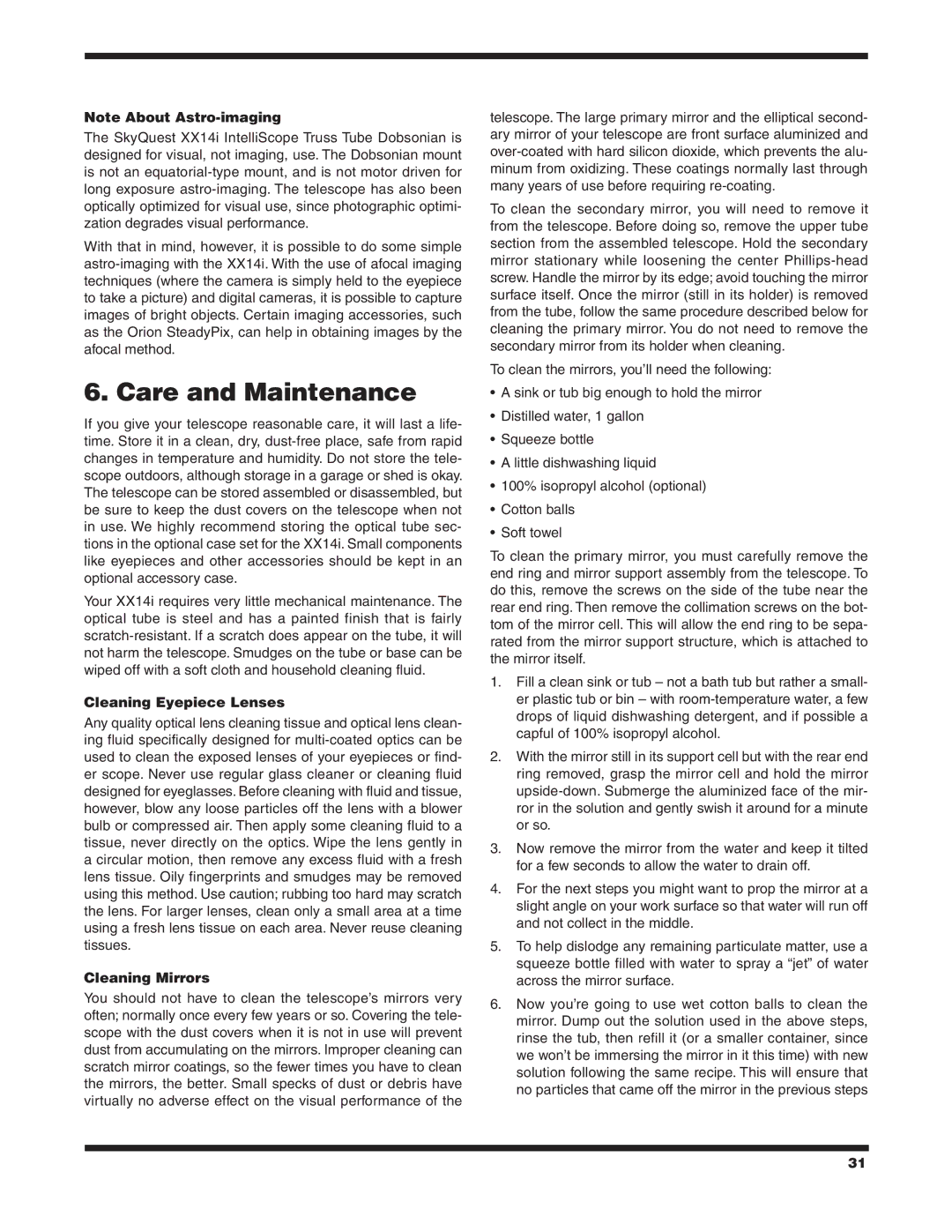
Note About
The SkyQuest XX14i IntelliScope Truss Tube Dobsonian is designed for visual, not imaging, use. The Dobsonian mount is not an
With that in mind, however, it is possible to do some simple
6. Care and Maintenance
If you give your telescope reasonable care, it will last a life- time. Store it in a clean, dry,
Your XX14i requires very little mechanical maintenance. The optical tube is steel and has a painted finish that is fairly
Cleaning Eyepiece Lenses
Any quality optical lens cleaning tissue and optical lens clean- ing fluid specifically designed for
Cleaning Mirrors
You should not have to clean the telescope’s mirrors very often; normally once every few years or so. Covering the tele- scope with the dust covers when it is not in use will prevent dust from accumulating on the mirrors. Improper cleaning can scratch mirror coatings, so the fewer times you have to clean the mirrors, the better. Small specks of dust or debris have virtually no adverse effect on the visual performance of the
telescope. The large primary mirror and the elliptical second- ary mirror of your telescope are front surface aluminized and
To clean the secondary mirror, you will need to remove it from the telescope. Before doing so, remove the upper tube section from the assembled telescope. Hold the secondary mirror stationary while loosening the center
To clean the mirrors, you’ll need the following:
•A sink or tub big enough to hold the mirror
•Distilled water, 1 gallon
•Squeeze bottle
•A little dishwashing liquid
•100% isopropyl alcohol (optional)
•Cotton balls
•Soft towel
To clean the primary mirror, you must carefully remove the end ring and mirror support assembly from the telescope. To do this, remove the screws on the side of the tube near the rear end ring. Then remove the collimation screws on the bot- tom of the mirror cell. This will allow the end ring to be sepa- rated from the mirror support structure, which is attached to the mirror itself.
1.Fill a clean sink or tub – not a bath tub but rather a small- er plastic tub or bin – with
2.With the mirror still in its support cell but with the rear end ring removed, grasp the mirror cell and hold the mirror
3.Now remove the mirror from the water and keep it tilted for a few seconds to allow the water to drain off.
4.For the next steps you might want to prop the mirror at a slight angle on your work surface so that water will run off and not collect in the middle.
5.To help dislodge any remaining particulate matter, use a squeeze bottle filled with water to spray a “jet” of water across the mirror surface.
6.Now you’re going to use wet cotton balls to clean the mirror. Dump out the solution used in the above steps, rinse the tub, then refill it (or a smaller container, since we won’t be immersing the mirror in it this time) with new solution following the same recipe. This will ensure that no particles that came off the mirror in the previous steps
31
